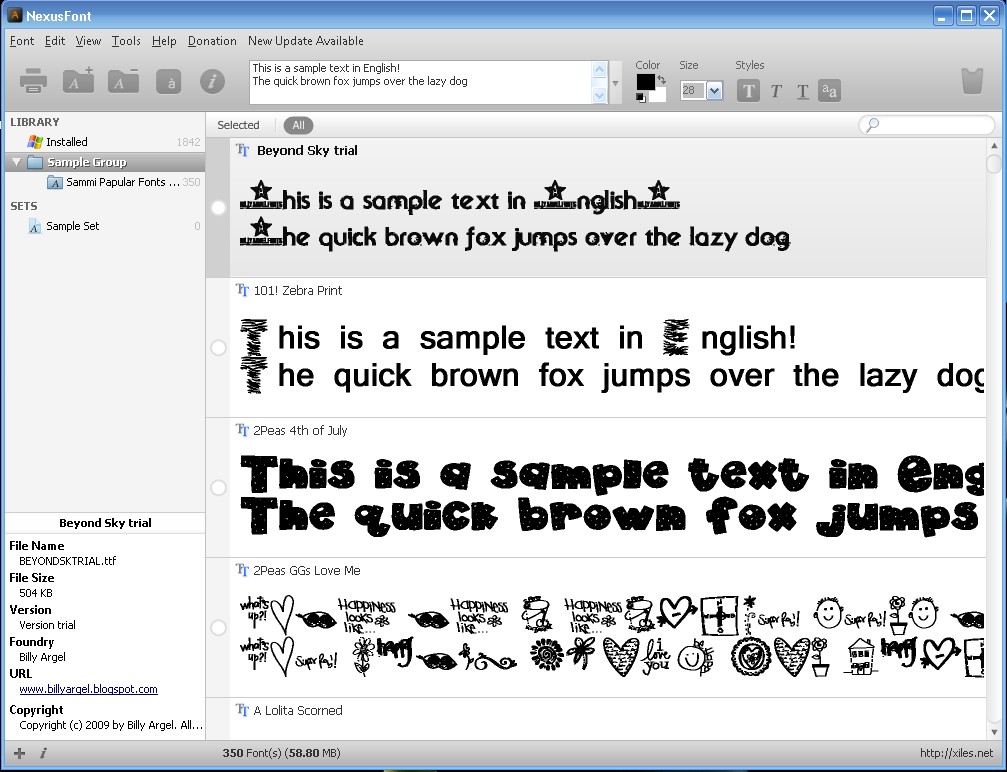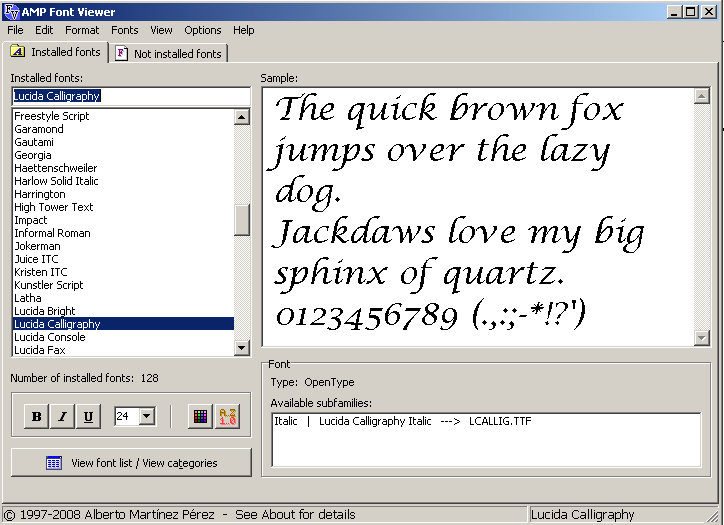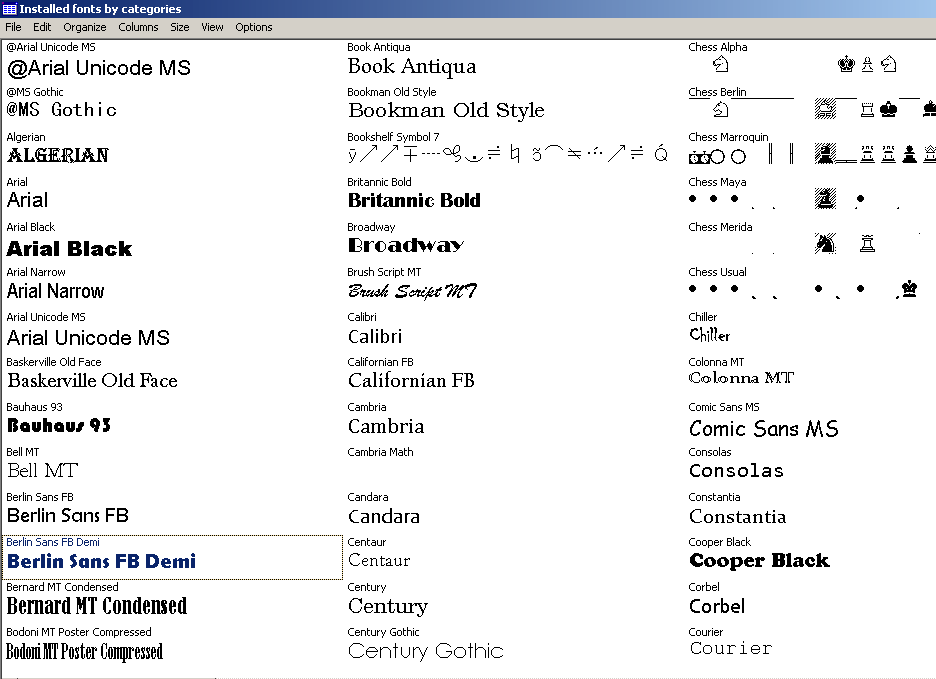


Let’s take a look at the methods we’ll use to work with the 3D graphics and OpenGL classes and methods we’ll use in this chapter.
#Vlw font viewer android
If you’d like to preview your sketch in the emulator using OpenGL hardware acceleration, you need to add the GPU emulation hardware property when you create your Android Virtual Device ( AVD).

Now we can also create groups of shapes using Processing’s createShape() method and retain geometry in the GPU’s memory for significantly improved graphics performance. When we use the OpenGL renderer in Processing 2.0, we can gain a high level of control over textures, image filters, 3D models, and GLSL shaders- OpenGL’s shading language for rendering effects on graphics hardware.
#Vlw font viewer upgrade
If a particular device hardware does not support all of OpenGL’s feature sets, the library uses software emulation via the CPU instead, allowing OpenGL to still run the application on most platforms but at a lower frame rate.Īndres Colubri has now integrated his GLGraphics library into Processing 2.0, providing us with a major upgrade to the P2D and P3D graphics renderer in Processing, with exciting new features for creating cutting-edge graphics that make use of OpenGL hardware acceleration. The GPU is responsible for providing us with the frame rates we need to animate geometry, render complex textures and shades, and calculate lighting effects. One of OpenGL’s most important features is that it provides an interface for communicating with the accelerator hardware, or GPU, typically built into computer graphic cards, game consoles, and mobile devices. It can be used to create complex 3D scenes from graphic primitives such as points, lines, and polygons. The Open Graphics Library ( OpenGL) is the industry standard API for creating 3D (and 2D) computer graphics and runs on most platforms. Let’s get started by taking a closer look at OpenGL in Processing. We’ll continue our investigation into shapes and 3D objects in Chapter 12, Working with Shapes and 3D Object, as the second part of our introduction to 3D graphics. We’ll also render a large amount of text with custom lighting, and we’ll position it dynamically on the screen using our familiar touch screen input. We’ll texture a sphere with a NASA image of the Earth at night and superimpose our camera preview as texture onto a 3D box. We’ll create apps that employ 3D cubes and spheres and use different types of lighting.

In this chapter we’ll create basic 3D shapes, use lights and textures, and manipulate the viewpoint of a virtual camera. Despite the multicore CPUs built into the latest Android devices today, we rely on the graphics hardware and OpenGL to achieve the smooth animations and special effects we are looking for. Only hardware acceleration makes it possible to animate thousands of data points, text characters, polygons, image textures, and lighting effects while maintaining a sufficiently high frame rate. On the Android, Processing takes advantage of the graphics processing unit, or GPU, built into the mobile device. Processing is a great environment to create sophisticated graphics, and it comes with an OpenGL library that can be used in all modes.
#Vlw font viewer free
It’s a free application programming interface and graphics pipeline that allows the software applications we create to leverage the graphics hardware built into our desktop computers, game consoles, and mobile devices for better graphics performance. Besides the geometry, which consists of points, lines, and polygons, we typically also work in a 3D scene with textures, lighting, and virtual cameras to control the appearance of shapes and objects and to change our perspective within the scene.Īll Android phones and tablets sold today support OpenGL ES, a lightweight implementation of the popular Open Graphics Library for embedded systems&-the industry standard for developing interactive 2D and 3D graphics applications across platforms. When we play 3D games or interact with complex data visualizations, the geometry that composes such a scene must be redrawn a few dozen times per second on the device screen&-ideally sixty times or more&-for animations and interactions to appear smooth and fluent. Rich graphics are the staple of sophisticated mobile games and data visualizations, and recent Android phones are well equipped with the necessary graphics hardware to deliver 2D and 3D graphics rendering without degrading performance.


 0 kommentar(er)
0 kommentar(er)
